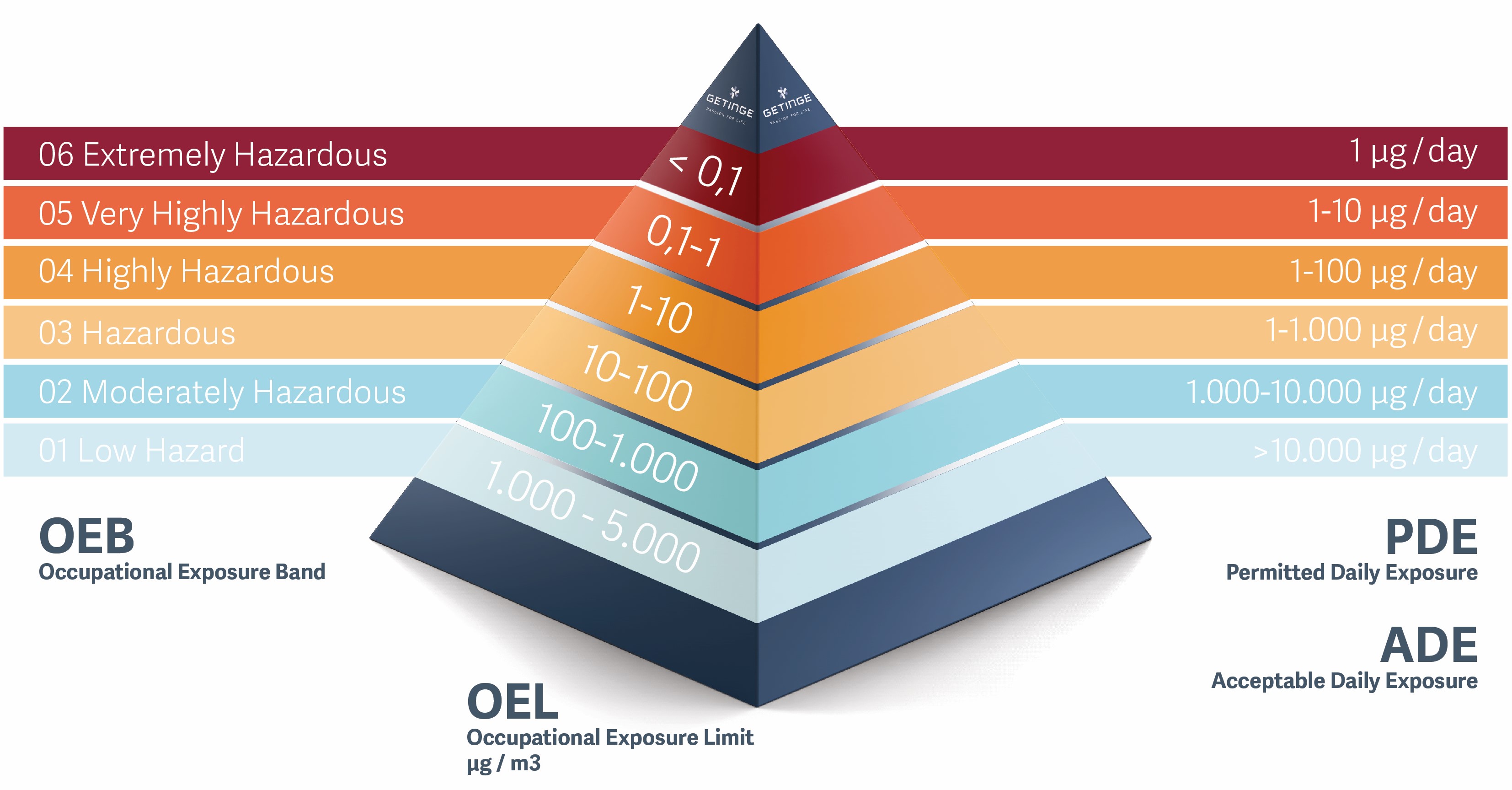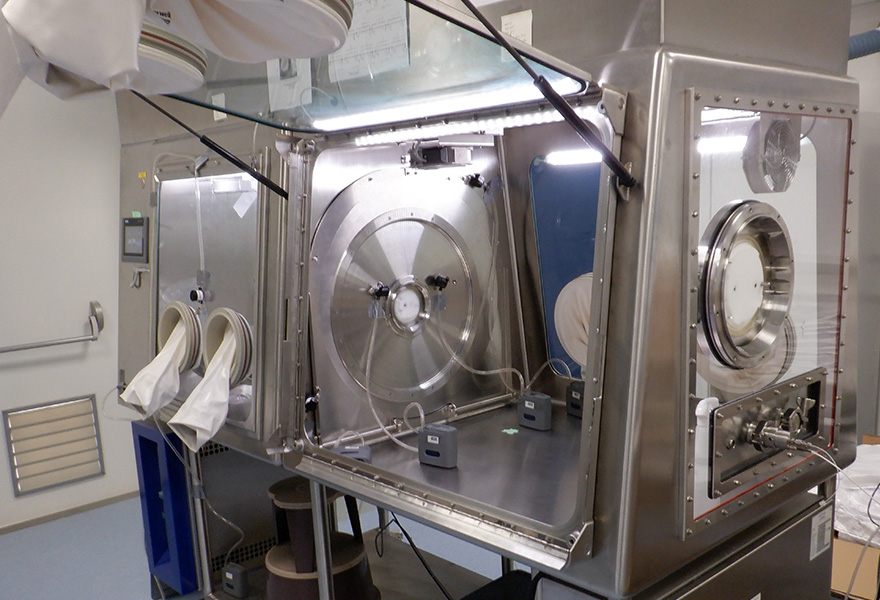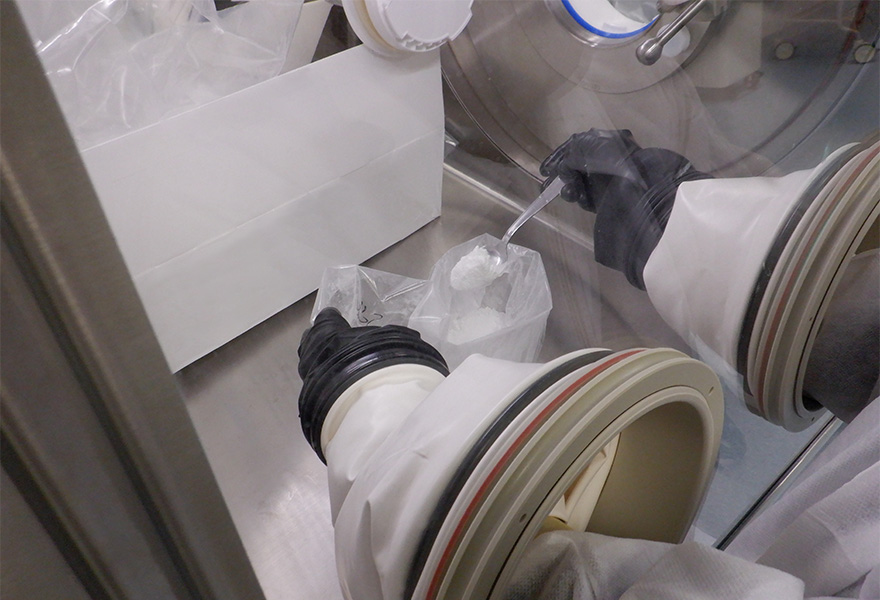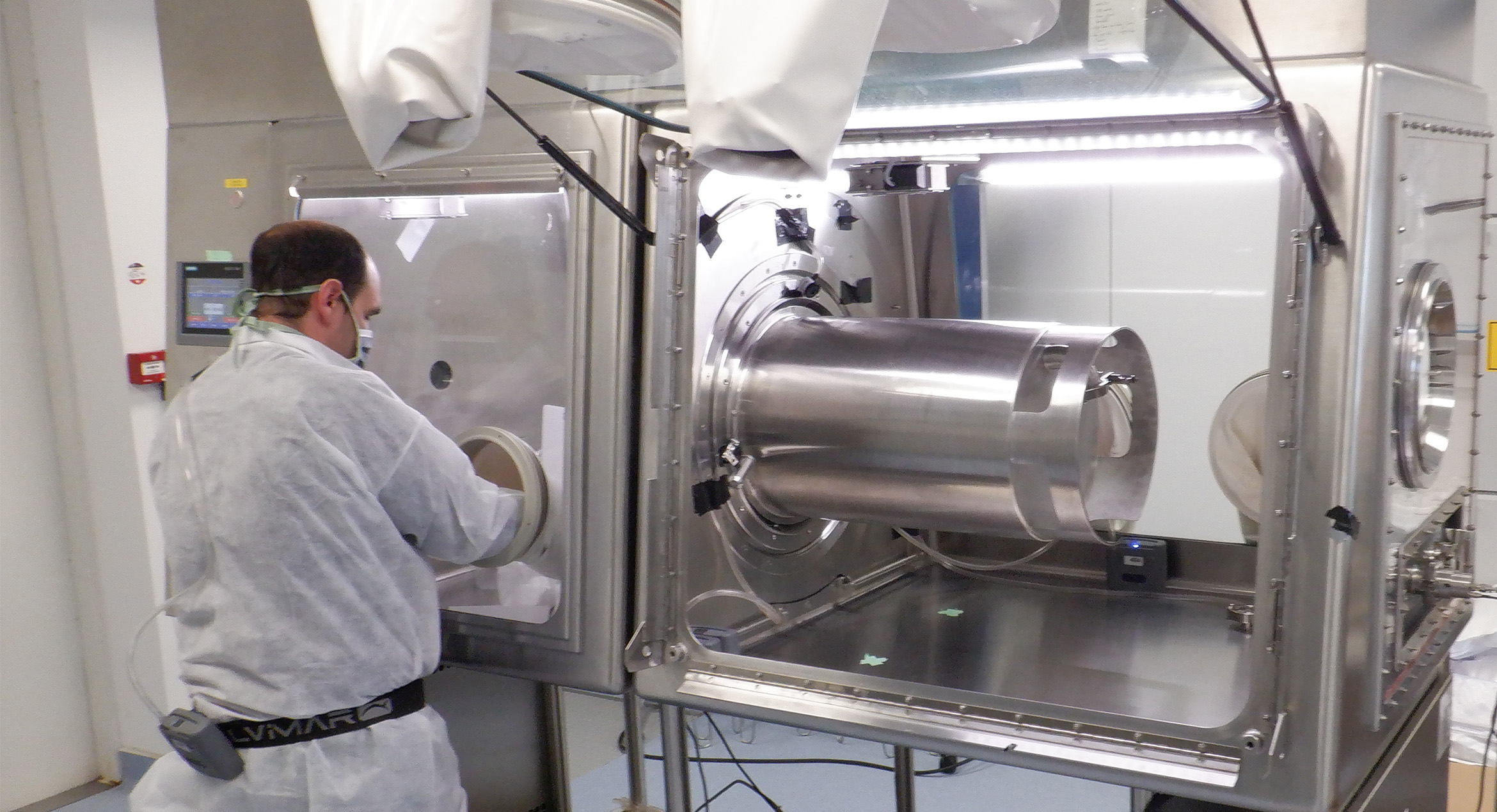Potentially hazardous active pharmaceutical ingredients (APIs)
When it comes to potentially hazardous active pharmaceutical ingredients (APIs) in a pharmaceutical manufacturing facility, containment is critical for ensuring personnel and environmental safety. For decades, people using the DPTE® rapid transfer port have been protected from exposure to potent APIs. To find out just how effective the DPTE® alpha port is, Getinge enlisted the help of SafeBridge® Regulatory & Life Sciences Group to run a series of tests in our lab in Vendôme, France.
Assessing occupational exposure limits
The potent active pharmaceutical banding system provides an overview of the acceptable levels of compounds in the environment based on their level of toxicity. This system enables a user to determine if a containment device is suitable for the safe handling of potent or highly potent API. The containment performance should always be equal to or lower than the OEL of the pharmaceutical active that is being handled.
For example, a substance that is a ‘band 4 API’, the containment performance should be 1 µg/m3 or lower.
Phase one: Isolator suitability and cleaning verification
“We began the study by actually validating the testing process and the team spent more than a week on this test alone,” explains Cyril Mounier, Pharmaceutical Applications Specialist at Getinge. “This ensured we had the right cleaning procedure and that we wouldn’t get a false positive due to other test equipment releasing material.”
The team developed a bespoke cleaning procedure, and air and surface samples were used to quantify its effectiveness. A month of planning went into the test and a total of 70 air and surface samples were collected in order to verify the test methodology.

Phase two: DPTE® containment performance assessment
DPTE® Alpha Port |
DPTE® Beta Part |
|
| Size (mm) | Type | Material |
| 105 | DPTE-BetaBag® | Polyurethane |
| 190 | DPTE-BetaBag® | Polyethylene |
| 270 | DPTE-BetaBag® | Polyurethane |
| 350 | DPTE® Beta Container | Stainless steel |
The team assessed the containment performance of each of the four different sized DPTE® Alpha ports after one, five and ten connections and disconnections of a DPTE-BetaBag® or DPTE® Beta Container.
During the study, acetaminophen powder was transferred into the isolator and surface samples looking for traces of acetaminophen were taken from various locations around the isolator and from the operator as well as from the DTPE® Alpha port. These samples provided information on the potential surface contamination associated with use of the DPTE®.

“We wanted to measure how much material escapes when removing the DPTE-BetaBag® or DPTE® Beta Container when an operator was handling a pharmaceutical powder in the left chamber,” says Cyril.
We were looking for nanograms and when transferring 500 mg of powder, this is an incredibly small amount – especially considering how fine the particles are and how easily they can disperse in the air.
In the experiment, the left chamber had negative pressure compared to right chamber, so if a leak did occur, the air would move from right to left. “This is an important factor and may play a role in how the configuration can protect the operator,” explains Cyril.
The Results
With the results showing containment capability up to OEB 6, the study demonstrated a high level of containment effectiveness of the Getinge transfer system when handling potent or highly potent pharmaceuticals. “It is absolutely critical to keep toxic substances inside an isolator in order to protect operators,” says Anneke Evers, Senior Director Customer & Portfolio Management for the Aseptic Transfer segment at Getinge. “And by testing multiple connections and disconnections we are ensuring the performance and leak-tightness of the DPTE® system.”
